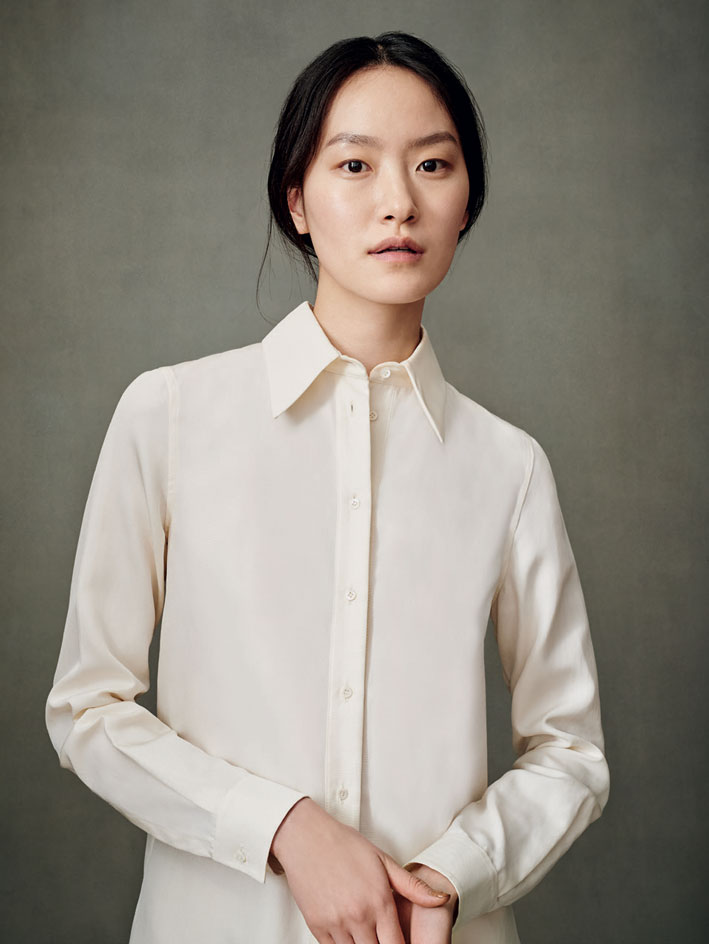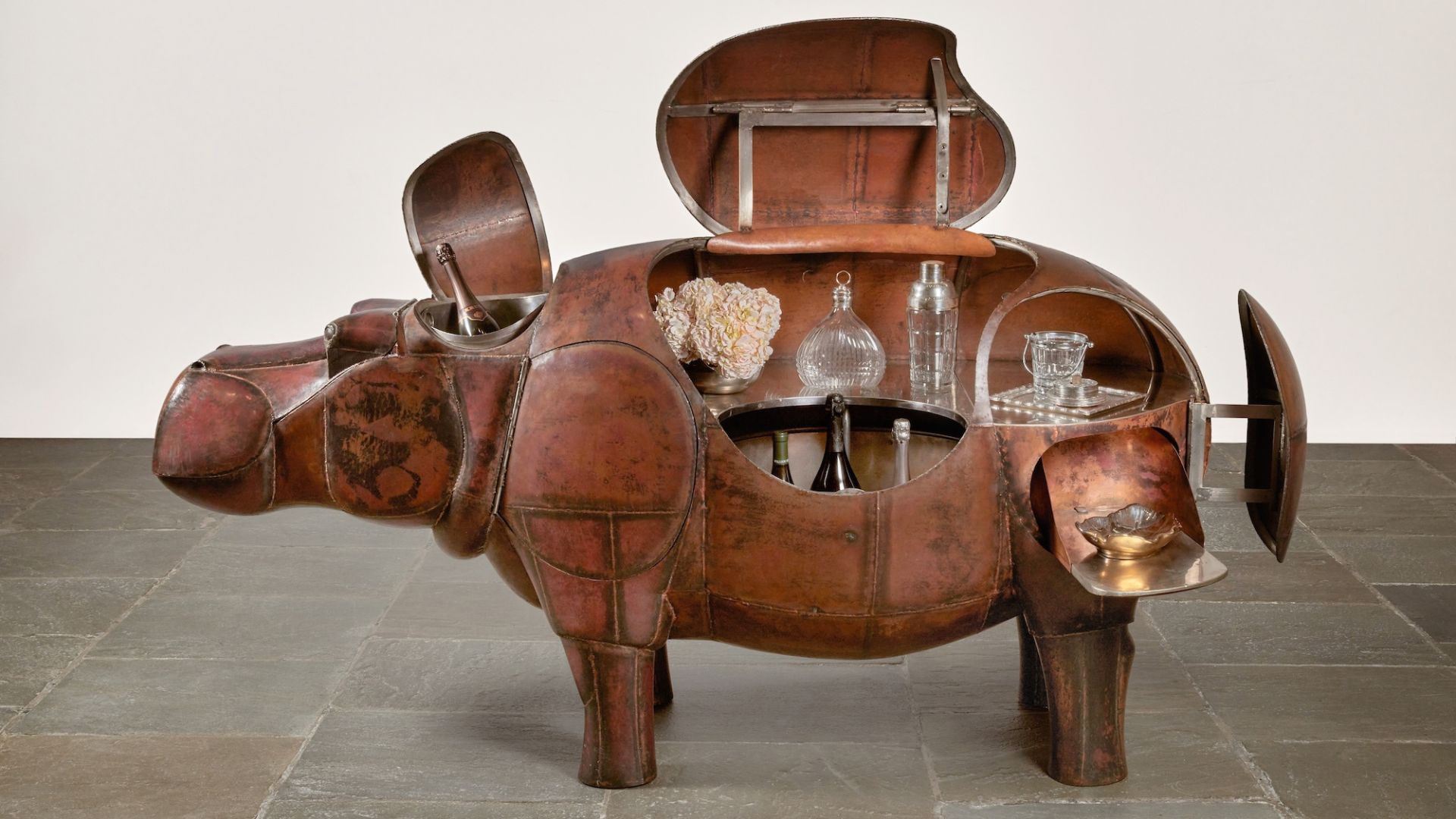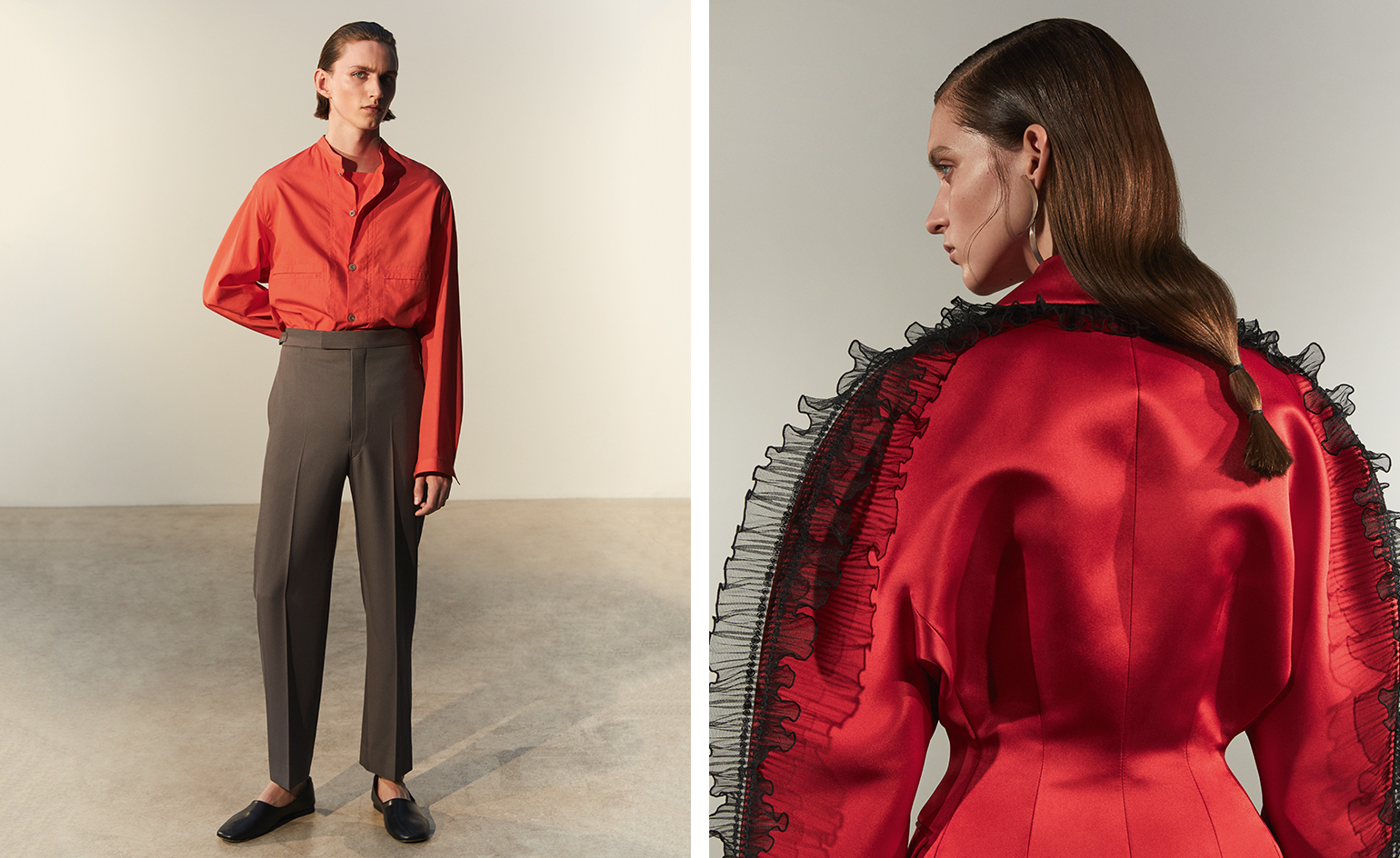White queen: three designers making a series of winning moves on the classic shirt

This spring, a trio of womenswear designers are putting their own spin on the classic white shirt. ‘It represents purity, a fresh take,’ says Maria Cornejo, of New York label Zero + Maria Cornejo, of her interpretation, which features a deep V-neck and drawstring details. ‘I’ve used a responsibly sourced viscose material that I love,’ she says. ‘It was developed using a yarn manufactured from a mixture of Norway spruce and Scots pine wood pulp, sourced from sustainable forests in Domsjö, Sweden.
Meanwhile, Brazilian-born, London-based designer Barbara Casasola describes her buttoned-up design with accentuated collar as ‘serious and pared-down but feminine.’ Femininity comes courtesy of its cream colouring and soft Italian poplin fabric, a mixture of cotton and silk. Finally, Dimitra Kolotoura and Mareva Grabowski, the duo behind Greek label Zeus + Dione, weave their own fabrics, and their band-collar shirt design, with subtly ballooning sleeves, is imagined in a transparent fabric with delicate stripes, created by weaving silk and metallic fibres. ‘The design focuses and frames the body in a fluid way,’ they say.
As originally featured in the May 2017 issue of Wallpaper* (W*218)

Top, $895; trousers, $675, both by Zero + Maria Cornejo

Shirt, £545, by Barbara Casasola
Receive our daily digest of inspiration, escapism and design stories from around the world direct to your inbox.
-
 Alexander Wessely turns the Nobel Prize ceremony into a live artwork
Alexander Wessely turns the Nobel Prize ceremony into a live artworkFor the first time, the Nobel Prize banquet has been reimagined as a live artwork. Swedish-Greek artist and scenographer Alexander Wessely speaks to Wallpaper* about creating a three-act meditation on light inside Stockholm City Hall
-
 At $31.4 million, this Lalanne hippo just smashed another world auction record at Sotheby’s
At $31.4 million, this Lalanne hippo just smashed another world auction record at Sotheby’sThe jaw-dropping price marked the highest-ever for a work by François-Xavier Lalanne – and for a work of design generally
-
 NYC’s first alcohol-free members’ club is full of spirit
NYC’s first alcohol-free members’ club is full of spiritThe Maze NYC is a design-led social hub in Flatiron, redefining how the city gathers with an alcohol-free, community-driven ethos
